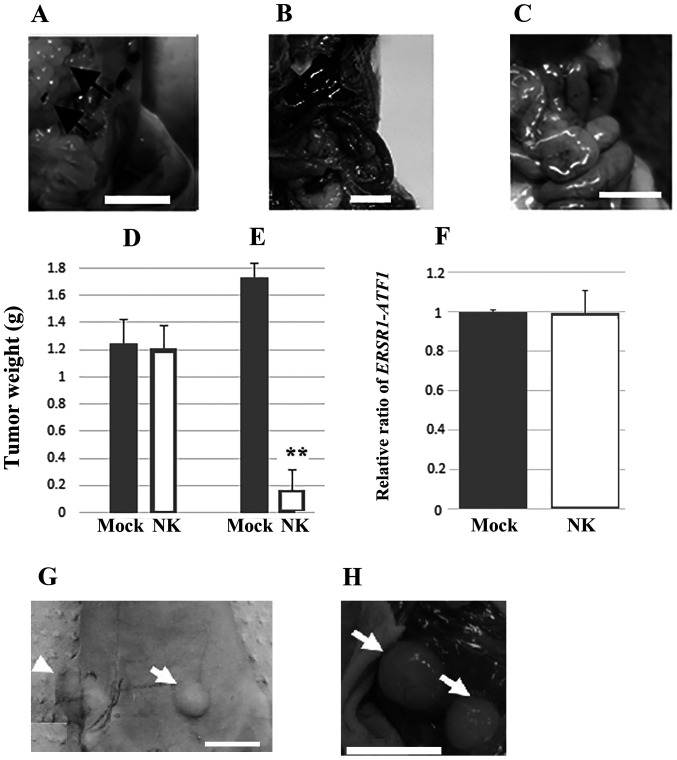Figure 1.
NK cells play a crucial role in suppressing metastasis of xenoplanted HS-MM cells. (A) SCID-Beige mice showed prevalent mesenteric lymph node metastasis (indicated by the arrows), whereas SCID-Beige mice transplanted with HS-MM cells and (B) murine and (C) human NK cells showed marked reduction of metastasis from the few macroscopic metastatic tumors found. (D) The tumor weight at the injection sites and (E) the total weight of the collected, disseminated mesenteric tumors, 10 days following the injection of human NK cells. The growth of xenotransplanted HS-MM cells at the injection sites was not altered by the transfer of human NK cells, whereas the growth of multiple disseminated tumors in the mesentery was inhibited. Data are expressed as the mean ± SD (n=3). Student's t-test was used. **P<0.01 vs. mock. (F) Reverse transcription-quantitative PCR showed similar expression of ERSR1-ATF1 chimera gene transcripts from blood buffy coat cells obtained from SCID-Beige mice injected with murine NK cells (n=3) and the mock group (n=3). (G) Anti-asialo-GM1 antibody treatment promoted distal metastasis (indicated by arrow) in BALB/c nude mice injected with HS-MM cells (arrowhead indicates the transplanted tumor). (H) Lymphatic metastasis was also observed in the BALB/c nude mice treated with anti-asialo-GM1 antibody (arrow). Scale bars, 1 cm. NK, natural killer; Mock, non-NK cell transplanted mice; EWSR1, EWS RNA binding protein 1; ATF1, activating transcription factor 1.

